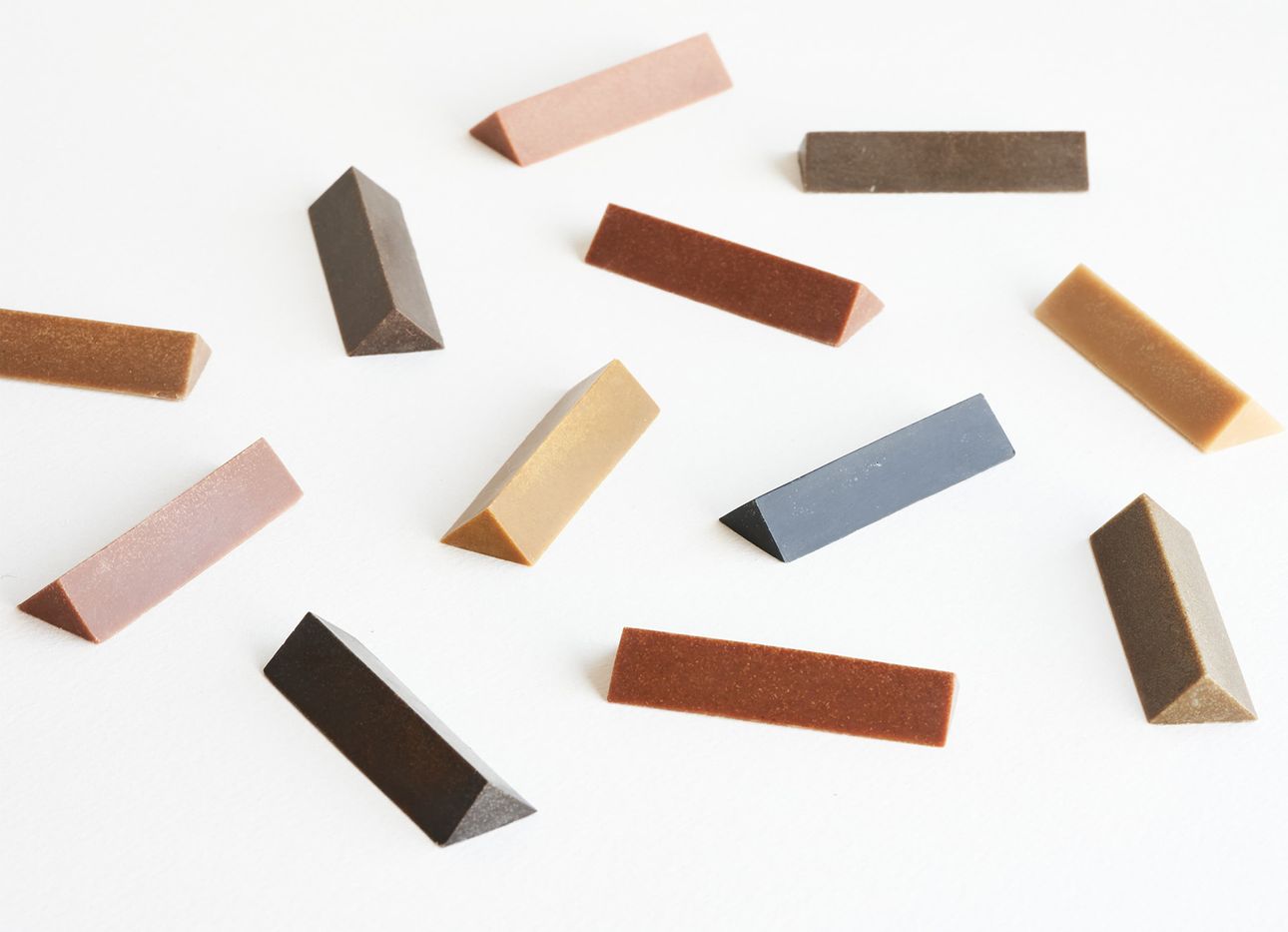
A Tokyo Design Studio Makes Crayons Out of Wood from Japan’s Overabundant Forests
In recent decades, art has steadily expanded into the digital realm, thanks, in part, to copious new apps, tools, and tutorials for creating pixelated illustrations and lifelike simulations. Playfool, a Tokyo-based design studio that seeks to spark imagination in artists of all ages through the act of play, decisively counters the trend—and draws attention to Japan’s obscure wood-waste problem—with its Forest Crayons, a series of prism-shaped drawing implements that are made from natural materials and that use wood as their sole source of pigmentation.
The idea for the crayons emerged earlier this year when Dan and Saki Coppen, who co-founded Playfool in 2017, took part in a design residency at the Wood Change Camp, a program supported by Japan’s Forestry Agency, which challenged participants to develop an inventive use for the overabundance of trees in the country.
Forests compose about two-thirds of Japan’s landscape. Around 40 percent of the trees were planted after World War II, which had consumed large areas of forested countryside to fuel its efforts; rebuilding the country’s infrastructure led to the use of even more timber. To meet the demand, the government financed the planting of millions of trees, primarily fast-growing hinoki (Japanese cypress) and sugi (Japanese cedar). The forests’ health relies on their trees being routinely harvested and replanted, but declining import costs have resulted in little use of the country’s own wood—leaving many forests unharvested and unmaintained, which increases the risk of geologic hazards such as soil erosion, floods, and landslides.
The Forest Crayons offer a scalable use for the excess wood and encourage the upkeep of the forests. To make them, wood is first collected from a lumberyard, or doba, in the Hida area of Japan. Each piece of wood is then ground down to a fine powder and mixed with wood wax derived from the Japanese Hazenoki tree. The melted mixture is poured into molds to create the crayons’ prism shape, then cooled to solidify. (The crayons are currently being refined for manufacturing, and will be available for purchase early next year.)
Regardless of its shape, composition, species, or defect, any piece of wood from the doba can be turned into a crayon. Each stick’s color is determined not only by the species of the tree, but also by the conditions under which it was grown. The series’ palette spans the light green of magnolia to the deep turquoise of fungus-stained wood, revealing the broad spectrum of wood’s hues and celebrating the material’s natural inconsistencies.
By creating tools for creativity in a way that simultaneously aids the health of Japan’s forests, Playfool demonstrates the profound educational potential that tactile toys and art materials can have. Giving a child (or an artist of any age) a set of the crayons is one way of putting the importance of the forests—and the possibilities they provide—into the hands of those who can safeguard their future.